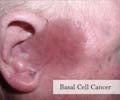Treatment and Prognosis
Squamous cell cancer is usually treated with surgery. Prognosis depends on the extent of the cancer and the immunity status of the patient.
Squamous cell cancer is treated with surgical excision. The complete lesion should be excised to prevent recurrence.
Radiotherapy may be used as an option in the following conditions:
- Patient is unfit for surgery
- Patient does not prefer surgery due to cosmetic or other reasons
- The cancer has spread to other parts
- Incompletely excised tumors or tumors at high-risk for recurrence. In these conditions, it may be used along with surgery.
Solar keratosis and small squamous cell cancers may be treated with cryotherapy.
Topical Medications - 5-fluorouracil (5-FU) and imiquimod are two FDA-approved drugs for treatment of actinic keratoses and superficial basal cell carcinomas. These drugs are also being used for some superficial squamous cell carcinomas. These drugs should not be used for invasive type of squamous cell carcinoma.
The prognosis or outcome of the condition depends on the following:
- Size of the cancer: Cancers greater than 2 cm in width have a poor prognosis.
- Depth of the cancer: As the cancer deepens into the tissues under the skin, it could spread to lymph nodes or other parts of the body, thus worsening the prognosis. Squamous cell cancer that spreads through nerves has a bad prognosis.
- Worse grade on biopsy: A high grade on biopsy results in a bad prognosis.
- Location: Squamous cell cancers on the limbs have a worse prognosis than those in other areas. Cancers on the lips and ears tend to recur more often than those on the trunk. Cancers that arise from skin lesions like burns or skin that has been exposed to radiation tend to spread faster.
- Immunity status: Cancers tend to spread faster in patients with decreased immunity like those who have had a transplant surgery of the kidney.
About 2,500 deaths occurs due to the spread of this cancer in the US each year. Spread from cancer to distant areas of the body is more common if it arises on sites such as ear, nose, lip, and mucosal regions, including the mouth, nostrils, genitals, anus, and the lining of the internal organs.













